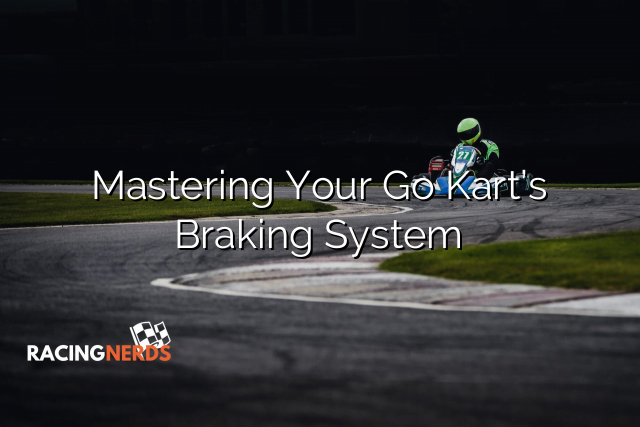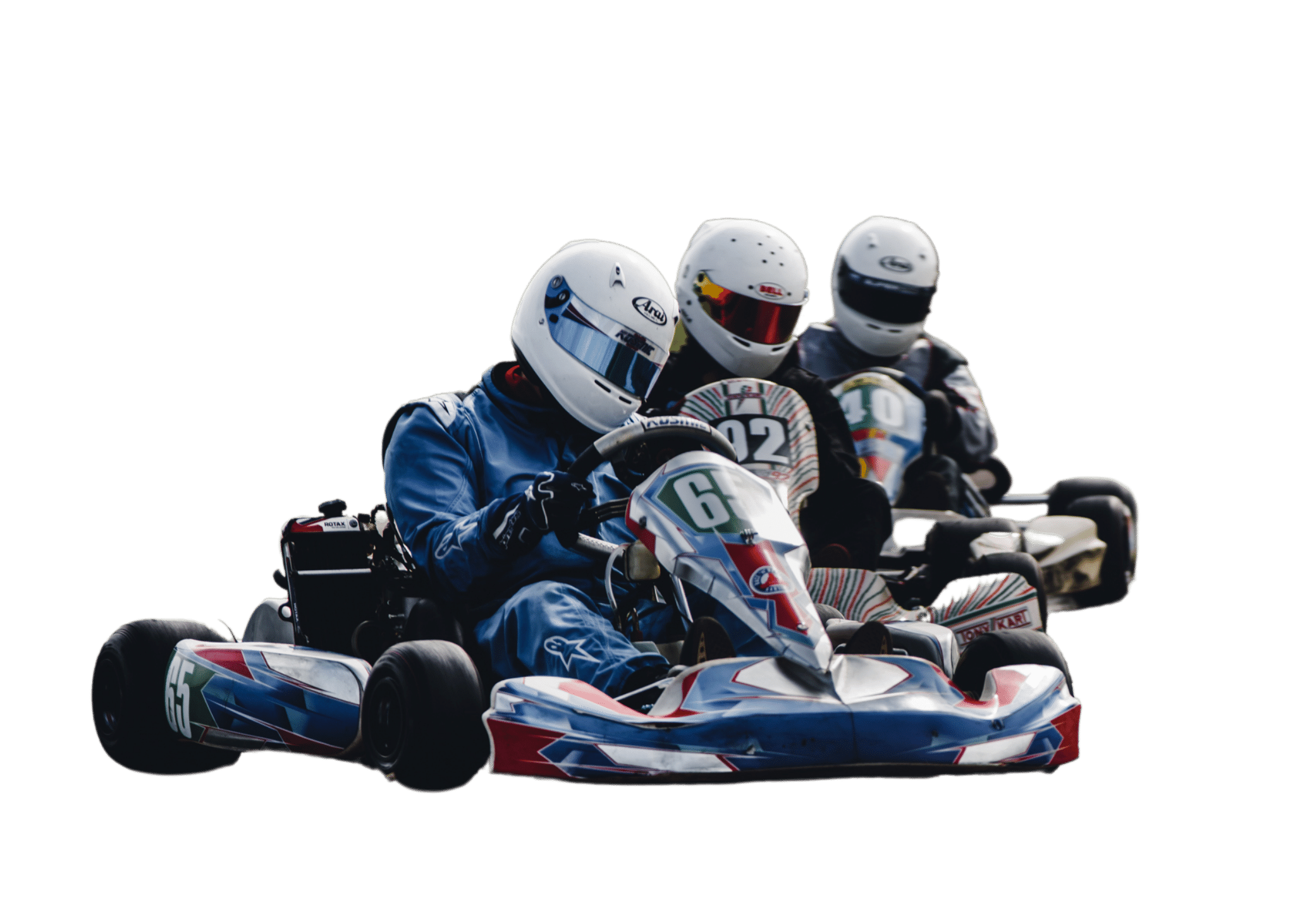
Nearly 70% of go-kart races are won in the corners, where braking is as much an art as a science. As you settle into the driver’s seat, remember that it’s your understanding and finesse of the braking system that often separates the good from the great.
While you might think that going fast is all about the throttle, it’s the mastery of when and how you apply the brakes that truly sharpens your edge. It’s time to get intimate with that pedal on the left; to learn its every nuance, how it behaves in a tight chicane, or during a sudden downpour.
You’ll need to know just how far you can push before your tires lock and your chances of victory spin away. Let’s explore the subtle dance of deceleration, where precision meets intuition, and uncover the secrets that can transform your lap times from average to exceptional.
To optimize your go-kart’s performance, it’s essential to thoroughly understand and adeptly manipulate your specific braking system. Each kart brand features distinct braking system components, which can significantly affect your lap times and handling characteristics.
You must familiarize yourself with the brake pedal feel, response, and the overall system’s dynamics. Regularly inspect and maintain these components to ensure peak performance. Braking system maintenance tips include checking brake pads for wear, ensuring that rotors aren’t warped, and verifying that hydraulic lines are free of air and leaks.
Precise adjustments to the brake bias can yield substantial improvements in braking efficiency and corner entry speed. Remember, a well-maintained braking system is paramount for consistent, high-level performance on the track.
Having mastered the intricacies of your go-kart’s braking system, it’s equally important to pinpoint precise braking points on the track to optimize your performance. Using visual cues for consistent braking is key. Identify static markers—like trackside signs or discolorations on the asphalt—as references to ensure you brake at the same spot every lap. This consistency is critical for shaving seconds off your lap times.
Adjusting braking technique for different track conditions is also essential. Dry weather might allow for late braking, while wet conditions require an earlier and gentler approach to avoid losing grip. Analyze the track’s layout and surface changes; adapt your braking points accordingly. Precision in this process translates directly to improved control and faster lap times.
Selecting the optimal braking technique requires a thorough understanding of your kart’s dynamics and the prevailing track conditions. To maintain control while decelerating efficiently, you’ll need to master brake modulation techniques. This involves varying brake pressure to match the demands of each corner and avoid locking the wheels.
Mastering corner entry begins with precise brake application to maintain optimal speed and control as you approach the turn. Improving braking consistency is key to negotiating bends with accuracy. This means you must establish repeatable braking points using track markers. You’re aiming for a sweet spot: braking firmly enough to slow down, yet not so harshly that you unsettle the kart or lose momentum unnecessarily.
Mastering late braking techniques can shave seconds off your lap times, but it requires finesse. It’s a balance between entering the corner at a high speed and not overshooting it. You need to understand the limit of your kart’s braking system and your own reflexes.
Practice makes perfect, and the more you refine your control over corner entry, the faster and more competitive you’ll become.
To enhance your performance in the braking zones, you’ll need to refine your braking technique, ensuring it’s both aggressive and controlled for optimal deceleration. Analyzing braking data is crucial; it provides insights into where you can brake later or apply more pressure. Here’s how you can improve:
Improving braking consistency is key to mastering braking zones. By methodically breaking down each corner and consistently hitting your marks, you’ll incrementally shave time off your laps and boost your overall performance on the track.
After refining your braking technique and pinpointing precise braking points, it’s essential to adjust your kart’s brake balance for optimal performance. Achieving the right brake bias adjustment is critical for even brake distribution between the front and rear wheels, directly affecting how your kart handles during deceleration. You’ll need to analyze the kart’s response during braking—does it oversteer or understeer? Adjusting the bias can correct these tendencies.
Utilize brake modulation techniques to fine-tune the pressure applied to the brake pedal, ensuring a smooth transition from full speed to the apex of a turn. This precise control mitigates wheel lock-up and maintains momentum.
When approaching the art of aggressive braking, it’s crucial that you understand the dynamics of your go-kart and how to apply brake pressure swiftly and effectively without causing a lock-up. Improving braking technique hinges on precision and understanding the threshold of your brakes.
Brake modulation techniques are key; they allow you to approach corners with more speed while still being able to decelerate in time. Master these skills, and you’ll not only shave seconds off your lap times but also gain a competitive edge in high-pressure racing scenarios.
Analyzing braking data from your sessions provides insights into your performance, revealing areas where your braking technique can be sharpened for faster lap times. By examining the telemetry or using a data logger, you can measure key variables such as braking force, duration, and pedal pressure. Here’s a table highlighting crucial metrics:
| Brake Force (N) | Brake Duration (s) | Corner Entry Speed (km/h) |
|---|---|---|
| 350 | 1.2 | 45 |
| 300 | 1.0 | 50 |
| 400 | 1.5 | 40 |
| 375 | 1.3 | 42 |
| 325 | 1.1 | 48 |
Improving braking technique starts with understanding the relationship between these metrics. Higher brake force applied over shorter durations may indicate an aggressive but efficient braking style, whereas longer durations at lower forces could suggest tentativeness or suboptimal brake application. Adjustments based on this data can lead to improved control and faster lap times.
Weather and track temperature can cause brake fade, reducing your kart’s stopping power. Without cooling ducts, high temperatures increase wear and decrease brake efficiency. You’ll need to adapt your braking strategy accordingly.
Yes, shifting your weight or adjusting your seat can alter the kart’s balance, affecting brake effectiveness. Prioritize driver comfort and seat stability to ensure precise, consistent braking performance.
You should regularly check brake fluid levels and inspect for pad wear to keep your go-kart’s brakes in top shape. Timely maintenance ensures reliable stopping power and optimal track performance.
Different tire compounds affect your kart’s stopping distance and brake modulation. You’ll need to adjust tire pressure and braking technique to optimize performance and ensure precise, controlled stops on the track.
Hydraulic systems offer smoother brake modulation than mechanical ones. You’ll need to adjust pedal pressure more precisely. Analyze each system’s feedback and adapt your technique for optimal control and braking performance.
In mastering your kart’s brakes, you’ve become the timekeeper, bending milliseconds to your will. Embrace the finesse of braking balance and the precision of corner entry control.
Analyze data to refine techniques, ensuring each lap is a testament to your evolving prowess. Remember, in the dance of deceleration, your foot’s pressure is the maestro’s baton—orchestrating a symphony of speed.
Now, go forth and conquer the track, one controlled stop at a time.

